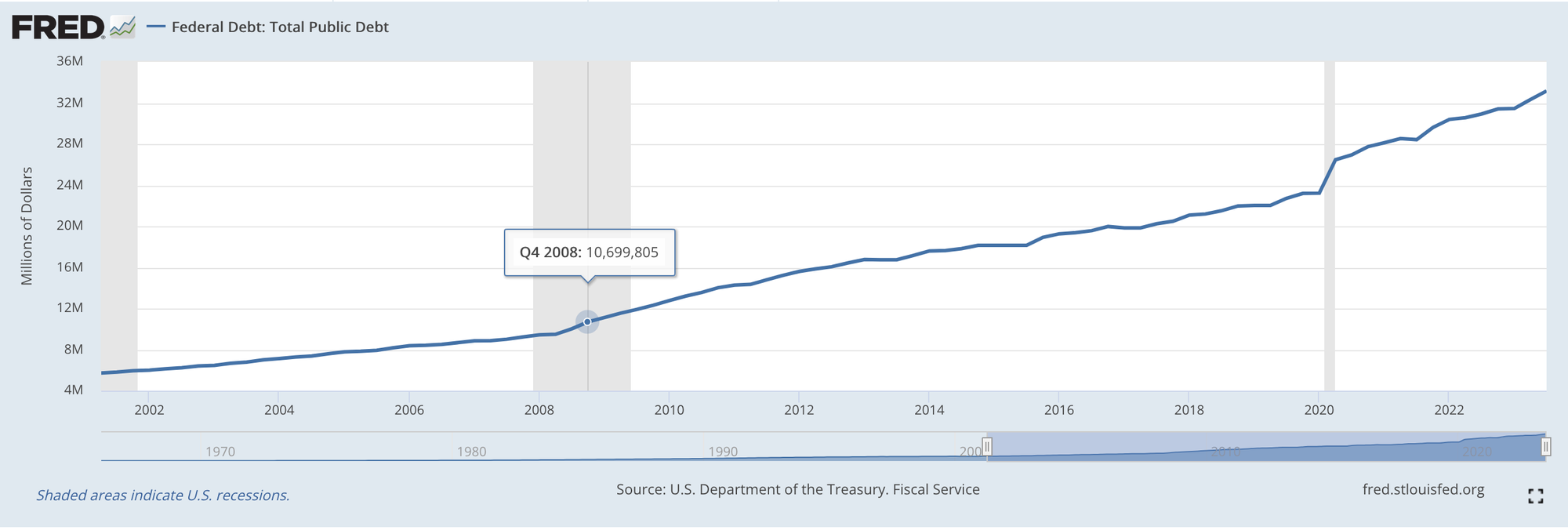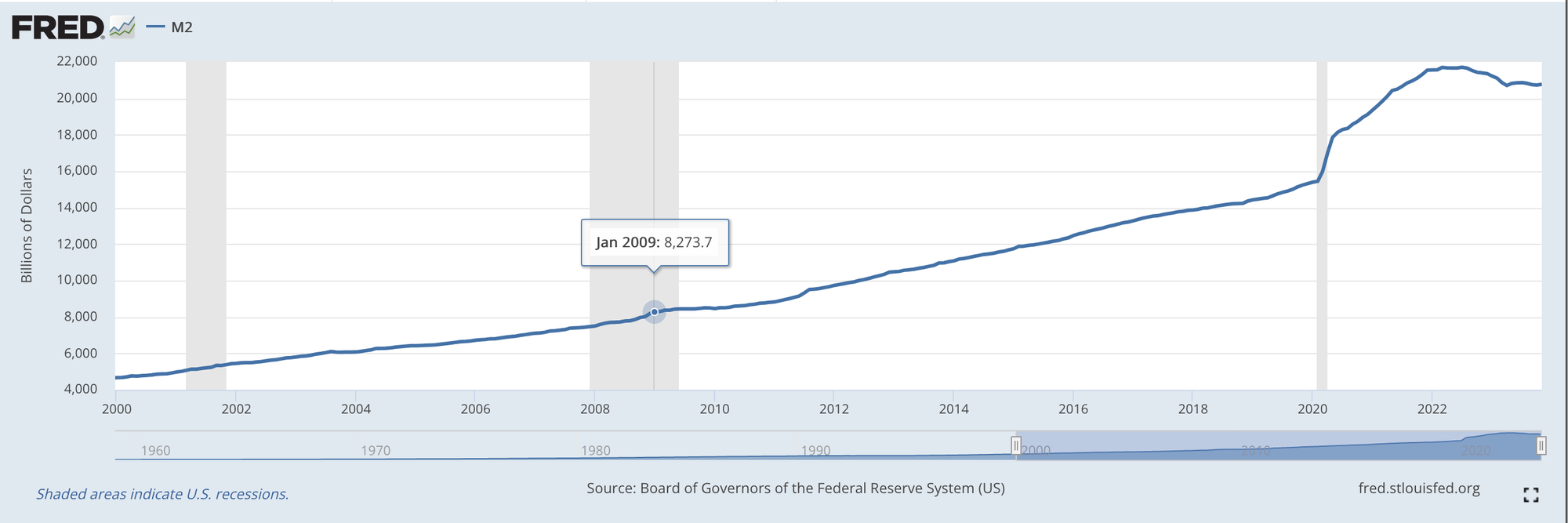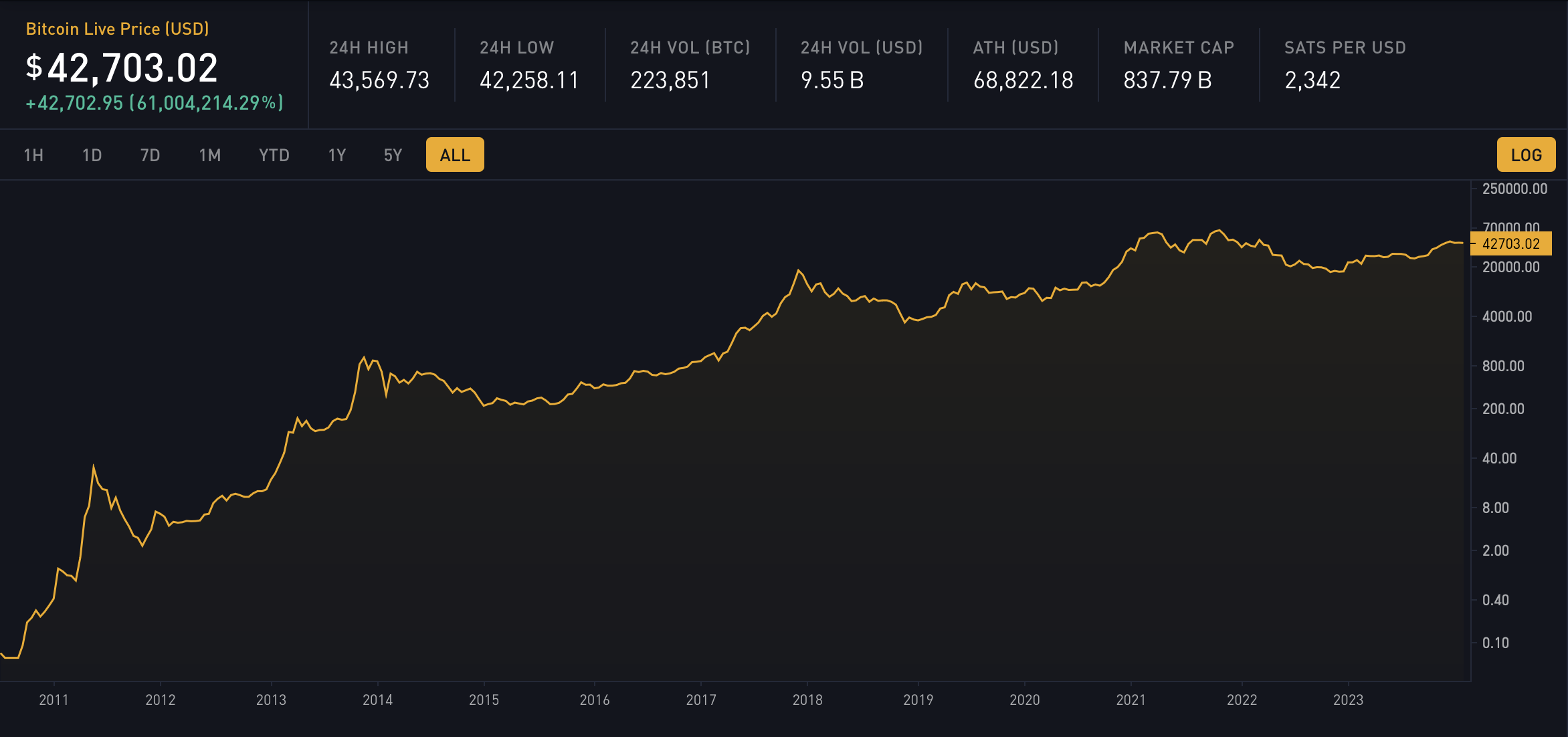

Business owners are currently facing the challenge of protecting their assets against the dual threats of US dollar inflation and Bitcoin's historical volatility. Inflation erodes the purchasing power of the dollar, while Bitcoin's price swings can introduce risk into a company’s financial strategy.
Business owners are currently facing the challenge of protecting their assets against the dual threats of US dollar inflation and Bitcoin's historical volatility. Inflation erodes the purchasing power of the dollar, while Bitcoin's price swings can introduce risk into a company’s financial strategy. This presentation provides an analytical approach to navigating these issues.
The purchasing power of the US dollar has significantly diminished since 1980, with a notable increase in the rate of this decline in recent times. Inflation rates are a critical concern for business owners as they directly affect balance sheets and the cost of doing business. The M2 monetary base, an important measure of the money supply, has surged from $8.27 trillion in January 2009 to approximately $21 trillion recently. This represents an increase of $13 trillion since the inception of Bitcoin.


Furthermore, the total federal debt has grown from around $10.7 trillion in 2009 to over $34 trillion. The ratio of national debt to the M2 money stock has increased from 1.26 to 1.68 within the same period, suggesting that debt expansion has outpaced monetary base growth. These factors indicate that inflation is unlikely to be tamed shortly and may worsen if the Federal Reserve cuts rates.

Bitcoin's price has been highly volatile since its creation in 2009. For instance, daily volatility can sometimes reach 5%, with significant price swings occurring within short timeframes. This volatility is attributed to the fact that Bitcoin is a new monetary good, monetizing in real-time during the past decade. As Bitcoin is a novel asset class undergoing rapid adoption, its price fluctuations are a natural consequence of its evolution.
Despite this, historical data indicates a trend of decreasing volatility over the years. As understanding and confidence in Bitcoin grow, its role as a long-term savings vehicle becomes more pronounced, potentially leading to a stabilization in price volatility. When viewed on a logarithmic scale, Bitcoin's price trend shows a consistent upward trajectory despite short-term fluctuations.

Business owners seeking to hedge against inflation using Bitcoin should approach the situation with a clear plan. This involves analyzing their balance sheet, cash flows, and profits to determine an appropriate Bitcoin allocation strategy. Rather than making impulsive decisions, a disciplined approach, such as dollar-cost averaging, can mitigate the risks associated with price volatility.
Planning for Bitcoin exposure on the balance sheet also requires a psychological shift. Rather than focusing solely on the downside risk, business owners should consider the potential for Bitcoin to appreciate in value over time. Allocating a percentage of profits or cash flow to Bitcoin as part of a long-term savings strategy can capture this upside potential.
In addition to traditional cash flow management, businesses can explore innovative ways to generate "sats flows," which refer to revenue streams denominated in Bitcoin's smallest unit, satoshis. Utilizing platforms like Podcasting 2.0 allows businesses to receive Bitcoin tips directly from customers, creating an additional revenue stream that can be accumulated without immediate conversion to fiat currency.

In conclusion, business owners must remain vigilant in the face of rising inflation and Bitcoin volatility. By understanding the economic landscape, developing a well-thought-out investment strategy, and adopting new technological solutions for revenue generation, businesses can navigate these dueling forces effectively. Planning, discipline, and a forward-thinking approach are essential to managing the balance sheet risks associated with inflation and Bitcoin's volatility.